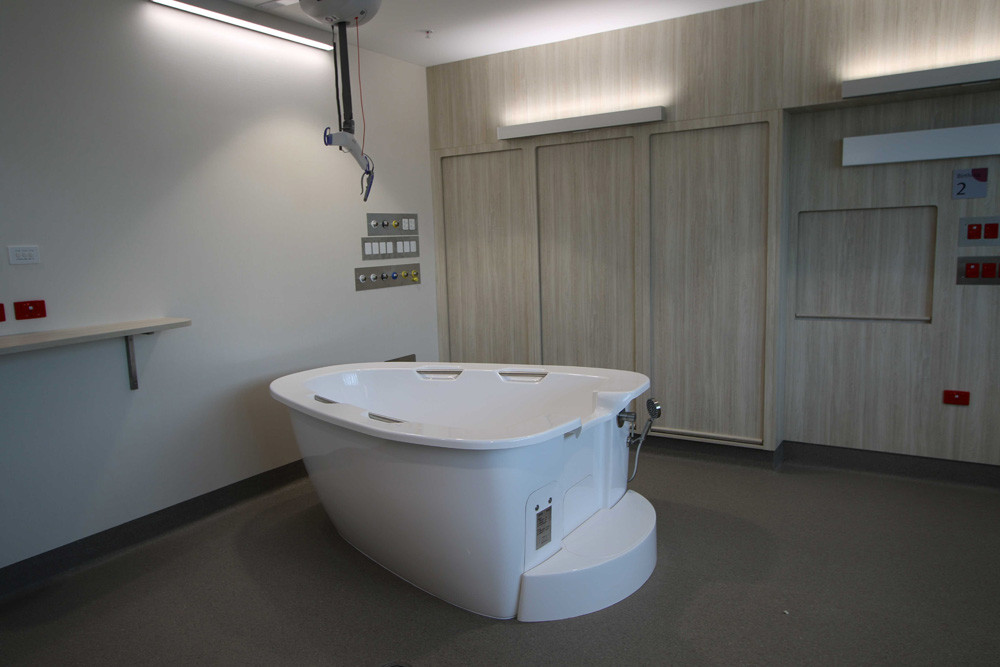Community & Business
8 July, 2023
Mothers call for changes to maternity unit
Atherton Midwives and Mother’s Alliance Consumer representatives have expressed a number of concerns, amongst the positives, with the town’s new hospital’s maternity unit.

Atherton Midwives and Mother’s Alliance Consumer representatives have expressed a number of concerns, amongst the positives, with the town’s new hospital’s maternity unit.
Speaking on behalf of the group, representatives Sarah Curcio and Jeralyn Mawdsley have presented a number of issues they feel need addressing.
The issues raised include courtyard accessibility, a baby bath facility, foot rests for breastfeeding chairs, stand-alone birth sling, double bed, labour and delivery room colours and lighting, availability of a portable resus machine and parking.
In the new multi-million dollar development, the maternity unit has been relocated to the second floor.
“The maternity ward isn’t built on ground level which goes against Australian Government recommendations,” the representatives said.
They say the relocation poses limitations for women attending the unit.
Access to an outdoor space was also a key concern in the early stage of consumer codesign of the redevelopment.
“...we remain troubled by the fact women will not have safe access to a private outdoor space without leaving the hospital premises,” they said.
“It is recommended that maternity units be designed and built in the ground floor partially for the reason for easy access to outdoor areas and natural surrounds.”
Access to a courtyard could provide women with some privacy, a calming area and give cultural significance and ties to the land for Aboriginal and Torres Strait Islander people.
“It is common for labour to slow upon arrival at a hospital as the change in environment can be stressful, resulting in a rise in adrenaline and subsequent fall in oxytocin production,” the group said.
“Providing a peaceful, outdoor space for these women can help them relax which will, in turn, help to restore oxytocin production and (result in) a more effective labour process.”
Another query from the AMAMA representatives centred around a portable resus machine.
The machine would allow for delayed cord clamping rather than early cord clamping and separation from mother to resuscitate infants by the wall fixed resus cabinet.
“If a portable resus machine is not already part of the new maternity unit, we wish to express consumer need for a machine to be purchased so that the women and families of the Tablelands can benefit from up-to-date evidence based care by facilitating DCC and infant/mother proximity during infant resuscitation,” the representatives said.
In response to calls for a portable resus machine, Atherton Hospital acting Midwifery Unit manager Jenny Nash said babies may need to be cared for on the dedicated resuscitation units.
“Atherton medical and midwifery staff routinely practise delayed cord clamping and encourage uninterrupted skin-to-skin time with mum for the first few hours following birth,” she said.
“However, if a baby’s condition is requiring active resuscitation, babies may need to be cared for on our resuscitation units, which are well equipped to assist in providing lifesaving care for the baby whilst in the room, close to the mother.”
The standalone birth-swing purchased by AMAMA, through private fundraising and significant consumer financial contributions was also a sticking point for the group.
Having sat in storage, they hoped it could be placed in a suite for women to use during their labour process.
Also of importance, the group highlighted the need for a dedicated parking space for those using the maternity unit.
“It is known the maternity unit requires 24 hour access and a direct and dedicated entry with drop-off parking for cars, taxis and ambulances is preferred,” they said.
“We would like to propose that due to limited parking available near the entrance of the new Atherton Hospital a parking space be assigned as ‘Maternity Parking’ with signage indicating it is a parking spot to be left available for women in labour.”
Ms Nash said they looked forward to opening the new Atherton Hospital maternity unit, and supporting expectant mothers and their families on their motherhood journey.
“As part of the new Clinical Services Building, we took on board a wide range of consumer feedback to help shape the new space and will continue to work with families and community groups,” Ms Nash said.
She said the AMAMA consumer group had provided “lovely responses” about the new ward and welcomed their constructive feedback.
Ms Nash said the hospital would investigate footrests to accompany the breastfeeding chair and they were excited to create a homely, relaxing space once they move into the new space.
“Our focus is always on the best possible birth for mums and babies along with safe woman-centred care,” she said.


